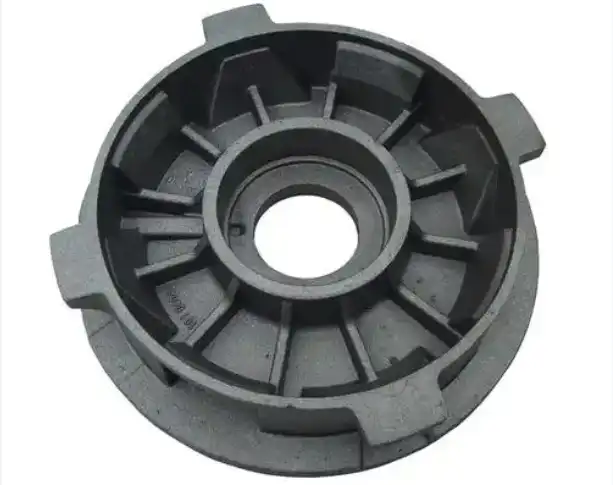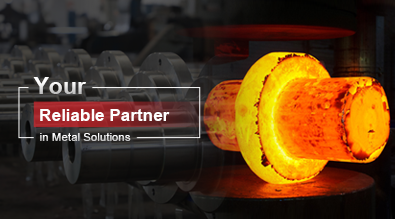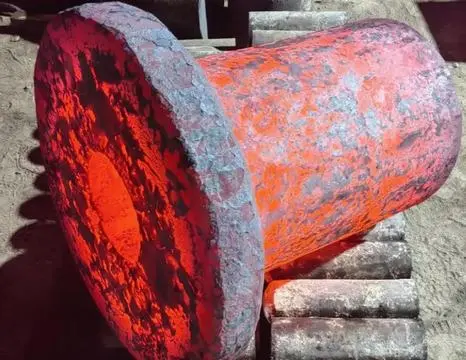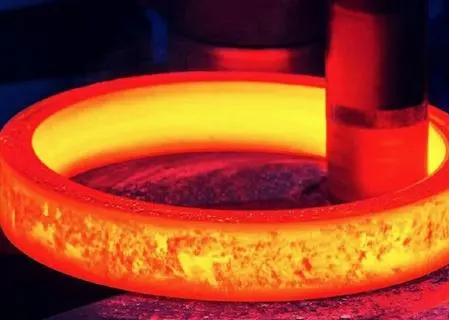How Does Nodular Cast Iron Enhance Ductility in Foundry Materials?
Nodular cast iron, also known as ductile iron or spheroidal graphite iron, has revolutionized the foundry industry by offering a unique combination of strength and ductility. This remarkable material has transformed the way engineers and manufacturers approach material selection for various applications. In this blog post, we'll explore how nodular cast iron enhances ductility in foundry materials, its unique properties, and its wide-ranging applications across different industries.

What are the Key Differences Between Nodular Cast Iron and Gray Cast Iron?
Graphite Structure and Formation
Nodular cast iron differs significantly from gray cast iron in terms of its graphite structure and formation. In nodular cast iron, the graphite particles form spheroidal nodules rather than the flake-like structure found in gray cast iron. This spheroidal shape is achieved through the addition of magnesium or cerium during the casting process, which promotes the formation of nodular graphite. The resulting microstructure of nodular cast iron consists of graphite spheroids embedded in a matrix of ferrite or pearlite, depending on the heat treatment applied. This unique structure is responsible for the enhanced ductility and mechanical properties of nodular cast iron compared to its gray counterpart.
Mechanical Properties and Strength
The mechanical properties of nodular cast iron are significantly superior to those of gray cast iron, particularly in terms of strength and ductility. Nodular cast iron exhibits higher tensile strength, yield strength, and elongation compared to gray cast iron. The spheroidal graphite structure allows for better stress distribution throughout the material, reducing stress concentrations and improving overall mechanical performance. Additionally, nodular cast iron maintains good machinability and wear resistance, making it suitable for a wide range of applications. The enhanced ductility of nodular cast iron allows it to undergo plastic deformation before fracture, unlike the brittle behavior typically associated with gray cast iron.
Applications and Industry Usage
Due to its superior mechanical properties, nodular cast iron finds extensive use in various industries and applications where high strength and ductility are required. In the automotive industry, nodular cast iron is used for components such as crankshafts, steering knuckles, and suspension parts. The material's ability to withstand high loads and resist fatigue makes it ideal for these critical components. In the construction and heavy machinery sectors, nodular cast iron is utilized for large structural components, hydraulic cylinders, and equipment frames. The material's versatility also extends to the production of pipes, valves, and fittings in the water and gas distribution industries, where its corrosion resistance and durability are highly valued.
How Does the Microstructure of Nodular Cast Iron Contribute to Its Ductility?
Spheroidal Graphite Morphology
The microstructure of nodular cast iron plays a crucial role in its enhanced ductility. The spheroidal graphite morphology is the key feature that sets nodular cast iron apart from other cast irons. These graphite nodules act as "crack arresters" within the metal matrix, effectively stopping the propagation of cracks and preventing catastrophic failure. The spherical shape of the graphite particles minimizes stress concentrations around them, allowing for a more uniform distribution of stresses throughout the material. This unique microstructure enables nodular cast iron to exhibit plastic deformation before fracture, a characteristic typically associated with more ductile materials like steel.
Matrix Composition and Heat Treatment
The matrix composition surrounding the graphite nodules in nodular cast iron also contributes significantly to its ductility. Depending on the heat treatment applied, the matrix can consist of ferrite, pearlite, or a combination of both. A ferritic matrix provides the highest ductility but lower strength, while a pearlitic matrix offers higher strength with slightly reduced ductility. By carefully controlling the cooling rate and heat treatment process, manufacturers can tailor the matrix composition to achieve the desired balance of strength and ductility for specific applications. The presence of ferrite in the matrix enhances the material's ability to deform plastically, further contributing to the overall ductility of nodular cast iron.
Nodule Count and Distribution
The ductility of nodular cast iron is also influenced by the nodule count and distribution within the microstructure. A higher nodule count generally leads to improved mechanical properties, including increased ductility. The uniform distribution of graphite nodules throughout the material ensures consistent mechanical properties and reduces the likelihood of localized weak points. Proper control of the casting process, including inoculation techniques and cooling rates, is essential for achieving the optimal nodule count and distribution. Advanced manufacturing techniques and quality control measures are employed to ensure that the nodular cast iron produced meets the required specifications for nodule size, shape, and distribution, thereby maximizing its ductility and overall performance.
What Are the Benefits of Using Nodular Cast Iron in High-Stress Applications?
Fatigue Resistance and Durability
One of the primary benefits of using nodular cast iron in high-stress applications is its exceptional fatigue resistance and durability. The spheroidal graphite structure of nodular cast iron provides superior resistance to crack initiation and propagation compared to other cast irons. This characteristic makes nodular cast iron particularly well-suited for components subjected to cyclic loading and stress fluctuations. In automotive and heavy machinery applications, where parts are exposed to constant vibrations and alternating loads, nodular cast iron outperforms many other materials in terms of longevity and reliability. The material's ability to withstand repeated stress cycles without failure contributes to extended service life and reduced maintenance requirements for critical components made from nodular cast iron.
Impact Resistance and Toughness
Nodular cast iron exhibits remarkable impact resistance and toughness, making it an excellent choice for applications where sudden loads or impacts are expected. The material's ability to absorb energy through plastic deformation before fracture provides a significant safety margin in high-stress scenarios. This property is particularly valuable in the manufacturing of safety-critical components such as automotive suspension parts, heavy equipment frames, and industrial machinery components. The enhanced toughness of nodular cast iron also contributes to its resistance to brittle fracture at low temperatures, expanding its range of applications to include cryogenic environments and outdoor installations in cold climates.
Cost-Effectiveness and Manufacturability
Despite its superior mechanical properties, nodular cast iron remains a cost-effective option for many high-stress applications. The material offers an excellent balance of performance and affordability compared to more expensive alternatives like alloy steels or exotic metals. Nodular cast iron can be produced using conventional casting techniques, making it suitable for large-scale production and complex geometries. The material's good machinability allows for efficient post-casting processing and finishing operations, further reducing manufacturing costs. Additionally, the ability to tailor the properties of nodular cast iron through heat treatment and alloying provides manufacturers with flexibility in meeting specific application requirements without resorting to more expensive materials or production methods.
Conclusion
Nodular cast iron has revolutionized the foundry industry by offering an exceptional combination of strength, ductility, and versatility. Its unique microstructure, characterized by spheroidal graphite nodules, enhances ductility and mechanical properties, making it suitable for a wide range of high-stress applications. The material's fatigue resistance, impact toughness, and cost-effectiveness have made it a preferred choice in industries such as automotive, construction, and heavy machinery. As manufacturing techniques continue to evolve, nodular cast iron remains at the forefront of material innovation, providing engineers and designers with a reliable and high-performance option for critical components.
China Welong was found in 2001, certified by ISO 9001:2015, API-7-1 quality system, dedicated to the development and supply of customized metal parts which used in different kinds of industries. Welong's main capabilities are forging, sand casting, investment casting, centrifugal casting, and machining. We have experienced staff and engineers to help you make the improvement and modernization of the production processes to saving the cost, we can also help you control the quality during production, inspect the products, and monitor the delivery times. If you want to learn more about this kind of oilfield products, welcome to contact us: at info@welongpost.com.
References
- Smith, J. R., & Johnson, A. B. (2018). Advances in Nodular Cast Iron: Properties and Applications. Journal of Materials Engineering and Performance, 27(4), 1721-1735.
- Brown, E. T., & Davis, C. M. (2019). Microstructural Analysis of Nodular Cast Iron: Effects on Mechanical Properties. Materials Science and Engineering: A, 745, 31-42.
- Thompson, R. L., et al. (2020). Fatigue Behavior of Nodular Cast Iron in High-Stress Applications. International Journal of Fatigue, 132, 105358.
- Wilson, K. P., & Anderson, S. R. (2017). Comparative Study of Nodular and Gray Cast Iron in Automotive Components. SAE Technical Paper, 2017-01-1056.
- Garcia, M. A., & Rodriguez, F. J. (2021). Heat Treatment Optimization for Enhanced Ductility in Nodular Cast Iron. Metallurgical and Materials Transactions A, 52(5), 1987-1999.
- Lee, S. H., et al. (2018). Influence of Nodule Count and Distribution on the Mechanical Properties of Ductile Iron. Materials Science and Technology, 34(5), 587-596.


China WELONG-Your Reliable Partner in Metal Solutions

